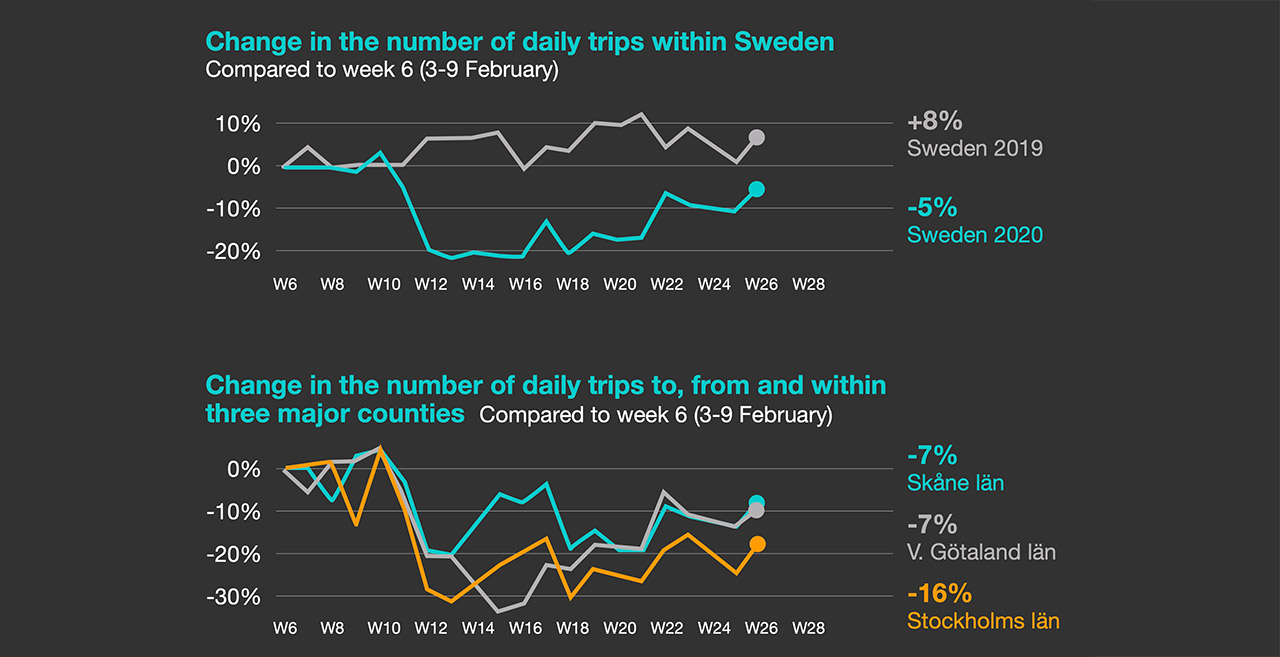Public Transport and COVID - where to next?
Public transport poses a paradox in the COVID-19 context in being both an essential service and a potential ‘super-spreader’.
This is an extract from: Digitalization of Public Transport in the Nordics & Baltics. You can download the full report here.
Public transport authorities and operators are taking steps to ensure the health and safety of workers and passengers and not contribute to the spread of the virus. Meanwhile, they need to address a sharp decline in ridership and the emergence of a “new normal”.
Of the goals identified in our research, increasing ridership is most likely to be impacted in the immediate term due to changing circumstances and travel behaviors. Cost efficiency remains an essential goal, not only to survive in the short term, but also to secure competitiveness and profitability beyond the crisis. The goal to reduce environmental impact also remains in focus.
The question remains: how to attract customers to return to public transport? Also, when they do return, how will their travel habits have changed?
Nordic and Baltic PTOs initially reported declines in passenger traffic of 40-70 percent, with the decrease in ridership largely correlating with the country’s restrictions. Sweden, for example, took a less stringent approach than its neighbors and has in turn seen a smaller drop in passenger numbers. The industry’s rate of recovery is uncertain, relying on further spread, duration, containment measures and not least consumer perception and willingness to return to previous habits.
PTOs have tackled the pandemic and the sharp decline in demand by initiating several strategies, including:
- More frequent and thorough vehicle cleaning.
- Greater control of passenger flows.
- Workforce training and improved communication and information.
- Reducing capacity and frequency of departures.
- Adaptive flexible ticketing vs monthly cards.
TO HELP THE INDUSTRY MOVE FORWARD
- A better understanding of changing travel behaviors will be needed to encourage ridership while simultaneously minimizing the risk of further spread. Therefore, accurate and current data as well as crowd level forecasts are required.
- PTAs may consider temporary relaxations of ridership-based compensation schemes to enable PTOs to keep more traffic running. All stakeholders share an interest in increasing ridership to previous levels – as long as it can be done safely.
- New safety measures should be put in place to secure the trust and support of passengers and to speed up transition in the recovery phase.
- Higher operating costs – of maintenance, administration and fuel – should be reviewed and actions taken to reduce these to compensate for lost revenues.
ANALYZING THE RESPONSE TO COVID-19 MEASURES

Crowd movement data have been used by Health Authorities in Finland, Sweden, Norway and Denmark to measure the movement of their citizens during the COVID-19 crisis. Because the crowd movement data is aggregated and anonymized, it cannot be used to track specific cases, but by measuring all trips and comparing with pre-COVID-19 levels, authorities are able to understand the effectiveness of the measures taken to Change in the number of daily trips to, from and within reduce travelling. Looking ahead, crowd movement data will also enable transport authorities to measure the demand for public transport and optimize route planning on a day-by-day basis. This will enable them to -20% provide the right level of service needed to enable passengers to follow social distancing guidelines.
Cookie notification
Cookies allow us to optimize your use of our website. We also use third-parties cookies for advertising and analytics. Please read our Cookie Policy for more information.

